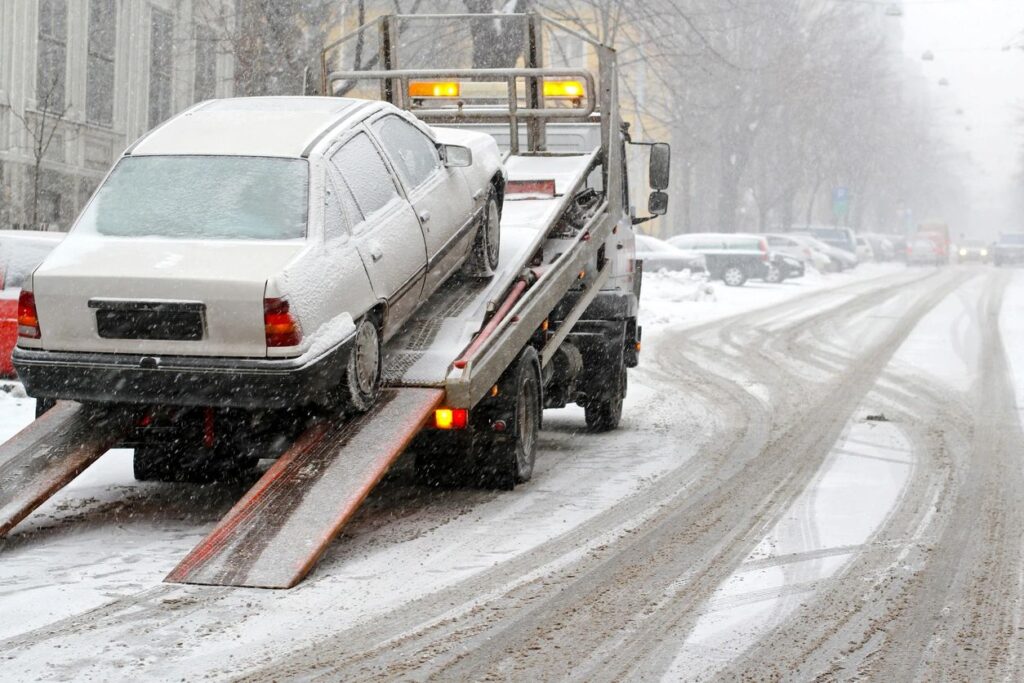Driving In These Gross Winter Conditions

As winter sets in and temperatures drop, the roads can become treacherous. Snow, ice, and sleet pose significant challenges for drivers, increasing the risk of accidents and collisions. However, with the right precautions and awareness, you can ensure a safer journey even in the most challenging winter weather conditions. Here are some essential tips for driving safely during the winter months.
1. Prepare Your Vehicle:
Before hitting the road in winter, it’s crucial to ensure your vehicle is in optimal condition. Here are some key preparations to make:
- Check Your Tires: Ensure your tires have sufficient tread depth and are properly inflated. Consider switching to winter tires, which provide better traction on snow and ice.
- Test Your Battery: Cold weather can strain car batteries. Have your battery tested to ensure it’s in good condition, and replace it if necessary.
- Top Up Fluids: Make sure your windshield washer fluid is topped up with a winter-grade solution that won’t freeze in low temperatures.
- Maintain Visibility: Replace worn wiper blades and ensure your defrosters are working effectively to maintain visibility in snowy conditions.
2. Plan Ahead:
Before embarking on a journey during winter weather, plan your route and check the weather forecast. Allow extra time for travel, as roads may be icy or congested. It’s also advisable to inform someone of your travel plans and expected arrival time, especially if you’re traveling long distances.
3. Drive Cautiously:
In winter conditions, it’s essential to adjust your driving behavior to match the road conditions. Here are some tips for safer driving:
- Reduce Speed: Slow down and maintain a safe distance from other vehicles. Accelerate, brake, and turn gradually to avoid skidding on icy roads.
- Brake Carefully: Apply gentle, steady pressure to the brakes to avoid skidding. If your vehicle has antilock brakes (ABS), apply continuous pressure in an emergency braking situation.
- Avoid Cruise Control: In slippery conditions, it’s best to maintain full control of your vehicle at all times. Avoid using cruise control, as it may increase the risk of losing control on icy roads.
- Stay Alert: Pay close attention to the road ahead and be prepared to react quickly to changing conditions. Watch for icy patches, black ice, and other hazards.
- Use Lights: Turn on your headlights to increase visibility, even during daylight hours. Use low beams in foggy or snowy conditions to avoid blinding other drivers.
- Beware of Bridges and Overpasses: These areas tend to freeze first and may be more slippery than other parts of the road. Approach them with caution and reduce your speed.
- Stay Home if Necessary: If the weather is severe or road conditions are hazardous, consider postponing your trip until conditions improve. Safety should always be the top priority.
4. Be Prepared for Emergencies:
Despite taking precautions, emergencies can still occur. Be prepared by keeping an emergency kit in your vehicle. Some essential items to include are:
- Blankets and Warm Clothing
- Non-perishable Food and Water
- First Aid Kit
- Flashlight and Batteries
- Snow Shovel and Ice Scraper
- Jumper Cables
- Flares or Reflective Triangles
By following these tips and exercising caution, you can navigate winter roads safely and reduce the risk of accidents. Remember, it’s better to arrive at your destination a little later than to risk your safety by driving too fast or recklessly in hazardous conditions. Stay informed, be prepared, and drive responsibly to ensure a safer winter driving experience for yourself and others on the road.





